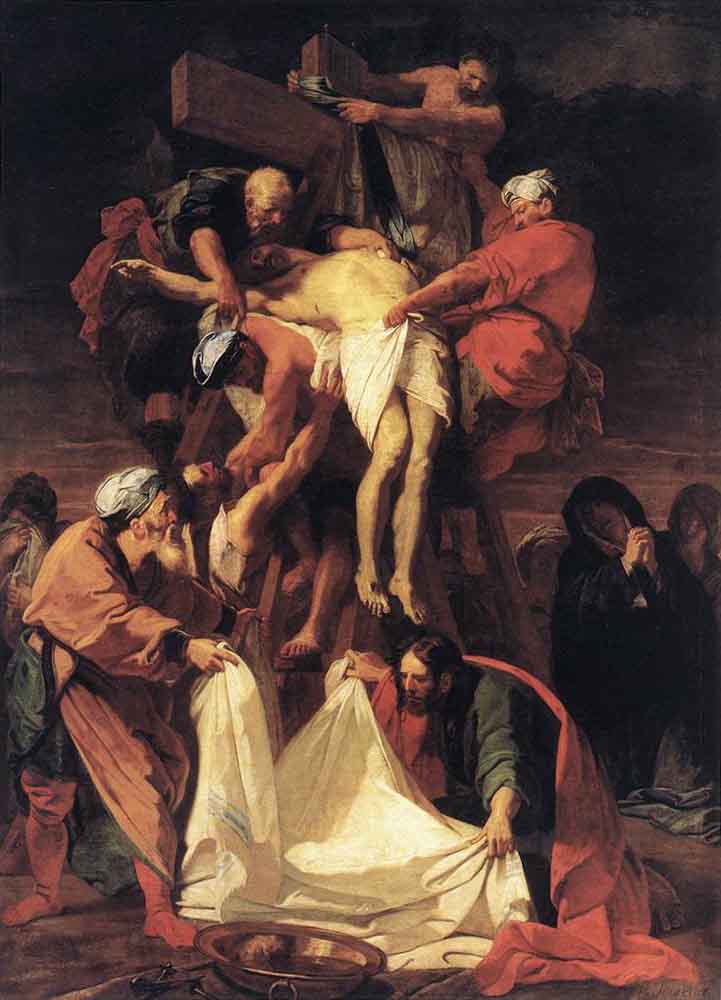|
Sindon (cloth)
Sindon, also known as Syndone, was a fine Textile#Cloth, cloth that resembled muslin or cambric. It had multiple applications, including as a material used in furnishing, covering the pyx, and was referenced in the Bible and ancient Greek literature. According to Christian tradition, it was Sindon cloth in which the body of Jesus of Nazareth was shrouded. History Sindon was an ancient Babylonian textile primarily made from linen. There are varying accounts of the texture and material, with some sources indicating cotton, linen, and silk. Sindon presents a source of confusion in various contexts. Certain scholars have interpreted this term to refer to dyed cotton fabrics. It was also alternatively known as 'Syndone' and held the transitional designation of 'cendel,' which had associations with silken materials. Records of exports from England in 1382 indicate that Sindon was a type of silk material. Sindon cloth has been produced in Sindh, Pakistan, since before the Christian era ... [...More Info...] [...Related Items...] OR: [Wikipedia] [Google] [Baidu] |
Jean Jouvenet Descent From The Cross
Jean may refer to: People * Jean (female given name) * Jean (male given name) * Jean (surname) Fictional characters * Jean Grey, a Marvel Comics character * Jean Valjean, fictional character in novel ''Les Misérables'' and its adaptations * Jean Pierre Polnareff, a fictional character from ''JoJo's Bizarre Adventure'' Places * Jean, Nevada, USA; a town * Jean, Oregon, USA Entertainment * Jean (dog), a female collie in silent films * "Jean" (song) (1969), by Rod McKuen, also recorded by Oliver * ''Jean Seberg'' (musical), a 1983 musical by Marvin Hamlisch Other uses * JEAN (programming language) * USS ''Jean'' (ID-1308), American cargo ship c. 1918 * Sternwheeler Jean, a 1938 paddleboat of the Willamette River See also *Jehan * * Gene (other) * Jeanne (other) * Jehanne (other) * Jeans (other) * John (other) John is a common English name and surname: * John (given name) * John (surname) John may also refer to: New Te ... [...More Info...] [...Related Items...] OR: [Wikipedia] [Google] [Baidu] |
Aldred The Scribe
Aldred the Scribe (also known as Aldred the Glossator) is the name by which scholars identify a tenth-century priest, otherwise known only as Aldred, who was a provost of the monastic community of St. Cuthbert at Chester-le-Street in 970. He is best known for his gloss of the Lindisfarne Gospels in the late tenth century. His word for word translation of the Latin texts into the vernacular of Old English made the gospels more accessible to his Old English speaking community. The translation was not just a mechanical transcription, but translated difficult Latin concepts into a clearer Old English context. Aldred also added a colophon to the text that indicates many important details about this copy of the gospels. Scribes generally added colophons to indicate the circumstances of their work; sometimes including the place, date, price of the manuscript, and client for whom it was copied. Aldred's colophon indicates that the Gospels were written by Eadfrith, a bishop of Lindisfarn ... [...More Info...] [...Related Items...] OR: [Wikipedia] [Google] [Baidu] |
Linens
Linens are fabric household goods intended for daily use, such as bedding, tablecloths, and towels. "Linens" may also refer to church linens, meaning the altar cloths used in church. History The earliest known household linens were made from thin yarn spun from flax fibres to make linen cloth. Ancient Egypt, Babylon, and Phoenicia all cultivated flax crops. The earliest surviving fragments of linen cloth have been found in Egyptian tombs and date to 4000 BCE. Flax fibres have been found in cloth fragments in Europe that date to the Neolithic prehistoric age. Cotton is another popular fibre for making cloth used for household linens. Its use in cloth-making also dates back to prehistoric times, in Indian subcontinent, China, Peru and Egypt. The Indian subcontinent was especially well known for high quality cotton cloth as early as 1500 BCE. Linen was an especially popular cloth during the Middle Ages in Europe, when cotton was an exotic import. It was used for underclothing, ... [...More Info...] [...Related Items...] OR: [Wikipedia] [Google] [Baidu] |
Textile Artefacts
Textile is an umbrella term that includes various fiber-based materials, including fibers, yarns, filaments, threads, different fabric types, etc. At first, the word "textiles" only referred to woven fabrics. However, weaving is not the only manufacturing method, and many other methods were later developed to form textile structures based on their intended use. Knitting and non-woven are other popular types of fabric manufacturing. In the contemporary world, textiles satisfy the material needs for versatile applications, from simple daily clothing to bulletproof jackets, spacesuits, and doctor's gowns. Textiles are divided into two groups: Domestic purposes onsumer textilesand technical textiles. In consumer textiles, aesthetics and comfort are the most important factors, but in technical textiles, functional properties are the priority. Geotextiles, industrial textiles, medical textiles, and many other areas are examples of technical textiles, whereas clothing an ... [...More Info...] [...Related Items...] OR: [Wikipedia] [Google] [Baidu] |

.jpg)
